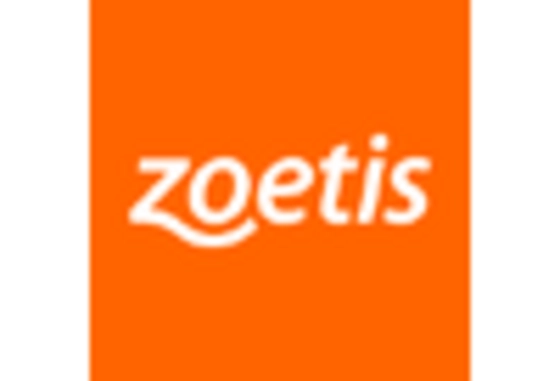Increasing Pet Ownership
The rise in pet ownership is a notable driver for the Isoxazoline Market. As more households adopt pets, the demand for effective flea and tick control products has surged. According to recent statistics, pet ownership rates have increased significantly, with millions of new pets being welcomed into homes annually. This trend is particularly pronounced in urban areas, where pet-friendly living spaces are becoming more common. Consequently, the Isoxazoline Market is experiencing heightened demand for innovative solutions that ensure the health and well-being of pets. The growing awareness among pet owners regarding the importance of preventive care further fuels this market, as they seek reliable products to protect their pets from parasites.
Rising Awareness of Animal Health
The growing awareness of animal health and welfare is a pivotal driver for the Isoxazoline Market. Pet owners are becoming increasingly informed about the risks associated with parasites and the potential health issues they can cause. This heightened awareness translates into a greater willingness to invest in preventive measures, including isoxazoline-based treatments. Educational campaigns by veterinarians and animal health organizations play a crucial role in disseminating information about the benefits of these products. As consumers prioritize the health of their pets, the Isoxazoline Market is likely to experience sustained demand, with an emphasis on products that offer both efficacy and safety.
Emerging Markets and Economic Growth
Emerging markets and economic growth present a promising opportunity for the Isoxazoline Market. As economies develop, disposable incomes rise, leading to increased spending on pet care products. In many regions, there is a growing middle class that views pet ownership as a status symbol, further driving demand for high-quality veterinary products. This trend is particularly evident in regions where pet care has traditionally been less prioritized. The Isoxazoline Market stands to benefit from this shift, as consumers in these markets seek effective solutions for parasite control. The combination of economic growth and changing consumer attitudes towards pet care is likely to propel the market forward.
Regulatory Support for Veterinary Products
Regulatory support for veterinary products is a significant driver for the Isoxazoline Market. Governments and regulatory bodies are increasingly recognizing the importance of effective parasite control in animals, leading to streamlined approval processes for new isoxazoline-based treatments. This supportive regulatory environment encourages pharmaceutical companies to invest in research and development, resulting in a wider array of products entering the market. As a result, the Isoxazoline Market is poised for growth, with new entrants and innovations enhancing competition. The emphasis on safety and efficacy in veterinary medicine further bolsters consumer trust, which is essential for the sustained expansion of this market.
Advancements in Pharmaceutical Formulations
The Isoxazoline Market is witnessing substantial growth due to advancements in pharmaceutical formulations. Recent innovations have led to the development of more effective and safer isoxazoline-based products for both companion animals and livestock. These formulations are designed to provide longer-lasting protection against parasites, which is a critical factor for pet owners and veterinarians alike. The market has seen a shift towards products that not only target fleas and ticks but also offer broader-spectrum efficacy against other parasites. This evolution in product formulation is likely to enhance consumer confidence and drive sales within the Isoxazoline Market, as pet owners increasingly prioritize the health of their animals.


















Leave a Comment